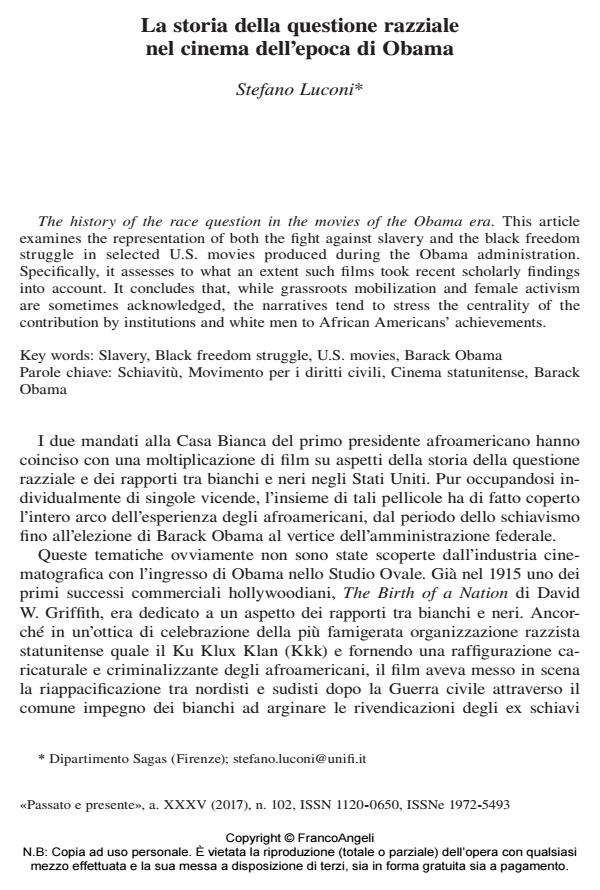The history of the race question in the movies of the Obama era.
Journal title PASSATO E PRESENTE
Author/s Stefano Luconi
Publishing Year 2017 Issue 2017/102
Language Italian Pages 19 P. 125-143 File size 149 KB
DOI 10.3280/PASS2017-102007
DOI is like a bar code for intellectual property: to have more infomation
click here
Below, you can see the article first page
If you want to buy this article in PDF format, you can do it, following the instructions to buy download credits

FrancoAngeli is member of Publishers International Linking Association, Inc (PILA), a not-for-profit association which run the CrossRef service enabling links to and from online scholarly content.
This article examines the representation of both the fight against slavery and the black freedom struggle in selected U.S. movies produced during the Obama administration. Specifically, it assesses to what an extent such films took recent scholarly findings into account. It concludes that, while grassroots mobilization and female activism are sometimes acknowledged, the narratives tend to stress the centrality of the contribution by institutions and white men to African Americans’ achievements.
Keywords: Slavery, Black freedom struggle, U.S. movies, Barack Obama
Stefano Luconi, La storia della questione razziale nel cinema dell’epoca di Obama in "PASSATO E PRESENTE" 102/2017, pp 125-143, DOI: 10.3280/PASS2017-102007